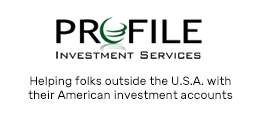
Does receiving stock dividends eliminate or mitigate the risk of investing in stocks? Why would an investor choose stocks without dividends?
Ben Reynolds, founder of Sure Dividend, provides guidelines for investors who are looking for stocks which pay high-quality dividends. He explains what a dividend is and how investors can use dividends to their advantage.
However, dividends also have disadvantages. Ben acknowledges these disadvantages and outlines why companies may stop paying dividends. Listen to learn the pros and cons of receiving stock dividends.
How much can you withdraw from your portfolio?
Doug answers one of the most common questions he hears as a financial advisor:
How Much Money Can I Safely Withdraw from My Portfolio?
Download the one-page resource here, and learn about the question you shouldn’t ask when planning your financial future.
Download free resource: How Much Money Can You Safely Withdraw from Your Portfolio?
Learn more about Ben Reynolds at Sure Dividend, download his pointers to demystify dividends here: Dividend Aristocrats. Follow Ben on Twitter @suredividend.
If you’re not already receiving updates on new episodes, sign up now, and as a special bonus, receive Doug’s free ebook The Retirement Planning Book.
Watch Does Receiving Stock Dividends Mitigate the Risk of Investing in Stocks? on YouTube.
Read the TranscriptInterview with Ben Reynolds
Ben Reynolds, founder of Sure Dividend investment site, takes listeners through “Dividends 101”—the basics of dividends—with pointers on what to look out for when getting dividends. He also gives advice on the different types of investment options to consider when investing, focusing on dividend growth.
Douglas Goldstein: I am very excited to be talking with Ben Reynolds. He is the founder of Sure Dividend, an investment site that focuses on high-quality dividend growth stocks for the long term.
Ben, before we go into the strategy and everything, let’s start with some of the basics. What is a dividend?
What Is a Dividend?
Ben Reynolds: A dividend is a cash payment from a stock you own that typically comes out of the earnings of the company. As an example, if Coca-Cola makes $5 in earnings per share, they might pay out $3 per share as a dividend.
What to Look for When Getting Dividends
Douglas Goldstein: Now let’s talk about a very critical question. What happens when you see companies that pay a dividend, but when you look at their earnings, those earnings don’t seem to be enough to pay that dividend? How are they doing that?
Ben Reynolds: First of all, that’s a big warning sign. They have to fund that dividend from elsewhere, so they might have cash on hand from previous years that they’re paying the dividend from, or they might be borrowing money. But in either case, it’s a warning sign that the dividend is not sustainable, and they can’t keep hanging indefinitely.
Douglas Goldstein: There are some industries which seem to do this for a long time. A lot of people used to like the oil pipelines, for example. Let me just note that I am not giving any recommendations, but I just really want to talk about the fundamentals of what a dividend is.
But people would say, “These pipelines just keep paying the dividend, and it looks so high.” What should they be worried about?
Ben Reynolds: That’s a good point. With MLPs and REITs, which are Real Estate Investment Trusts, that’s a separate case from the traditional common stock. The operating structure of REITs and MLPs is different as their earnings are very understated relative to the amount of cash they make.
Therefore, you wouldn’t want to look at just an earnings payout ratio with them because they’re making a lot more cash than their earnings show. This would be a special case. If an MLP has a payout ratio of 120%, their distribution there is likely safe, depending on other factors.
Douglas Goldstein: Let’s discuss this a little more. It’s a very interesting point you’re making, and people really need to understand the difference. Let’s talk for a minute about a REIT because it’s something you can sink your teeth into since it’s a real property.
Let’s say a REIT, which stands for Real Estate Investment Trust, buys a bunch of buildings. Those buildings generate some income in the form of rent that they pass through to the shareholders. How can they pass through more income than they actually receive in rent?
Ben Reynolds: That’s a great question. When you’re talking about income, it is an accounting measure. It takes out a depreciation, and appreciation isn’t a real cash expense. For example, if, like you said, a REIT owns five office buildings, they can pay out most of the money they’re getting in rent as a dividend.
Their earnings will be understated because those earnings have depreciation subtracted out. Depreciation is just how much you would expect the building value to go down every year, but it’s not an actual cash outlay, I should say. So, that’s the distinction there.
Douglas Goldstein: That’s a good explanation because they actually are collecting the rent. They’re not printing money out of thin air because it’s not as if the U.S. government can just print more money whenever they need it.
Ben Reynolds: Yes, exactly.
Douglas Goldstein: When people are looking for dividends and they like the idea, they’re going to look for a company that either has earnings, like you said, to justify, or maybe it’s one of these special cases, like a REIT or an MLP, which stands for Master Limited Partnership; it is often just another format of how a company is set up. What are other things that people should look for if they like the idea of getting dividends?
Ben Reynolds: Some other things people should look for are a long history of dividends. Just intuitively, a company that’s been paying dividends for 10, 20, 30, or 40 years in a row is more likely to continue paying them than a company that’s only paid them for one or two years in a row. That’ll show some consistency that the business is likely going to persist in the future.
Another thing to look for would just be the dividend yield. All things being equal, which they never are, a higher yield is better. You’re getting paid more money for every dollar you invest.
Douglas Goldstein: I like your comment, “all things being equal, which they never are,” which is so true.
Ben, you’ve talked about real estate companies or companies involved in oil and gas pipelines, which seem to be paying dividends even though it appears they’re not making enough money.
Before we continue on the dividend track, just tell me, why would anyone ever buy a stock if it doesn’t pay a dividend?
Ben Reynolds: The reason to buy that would be for capital appreciation. A great example would be Google. If you expect Google to make much more money 10 years from now than they do today, you might want to invest in Google.
The advantage to investing in stocks that pay dividends is that they’ve proven that they’re making real money and that they’re paying it out to shareholders. You’re getting a real return now, and you’re not gambling on that capital appreciation. You don’t require the company to grow to make money.
Douglas Goldstein: How often do companies drop or lower their dividend? In which case, I would presume that that’s also bad for the stock price.
Ben Reynolds: Yes, it certainly is bad for the stock price. Unsurprisingly, stocks that cut or eliminate their dividend tend to underperform compared to stocks that don’t. As far as how often that occurs, it is really case-specific—the higher the payout ratio, in general, the more likely a company is to cut its dividend.
The shorter its dividend history, the more a dividend cut is likely to occur because management hasn’t built up that inertia that they really don’t want to cut the dividend. Those are two factors that would increase it.
Then a third factor would just be the general economy; there were a lot more dividend cuts in 2008 and 2009 than there were in 2016.
Douglas Goldstein: Do you feel that the people who make the decision about the dividend might actually have a conflict of interest with the company or the other shareholders?
The Conflict of Interest Issue
Ben Reynolds: That’s a very interesting point. There can be conflicts of interest in a lot of different ways. Depending on how their compensation works, the manager’s imperative is probably to grow the size of the business. Paying a dividend now is money given to shareholders. This is money that can be spent actually growing the business.
Paying a dividend forces managers to be more selective in the growth investments they do take on. It tends to be a win for shareholders.
Douglas Goldstein: I actually thought that people might be conflicted. Let’s just go back to the basics. Who makes the decision about declaring a dividend?
Ben Reynolds: I’m not really sure who does that, but I know, in general, it’s the management. I don’t know if it’s the Board of Directors that actually makes that decision.
Problems to Look Out for When Investing on Dividends
Douglas Goldstein: There’s definitely a possibility that there could be a conflict of interest because maybe the shareholders want to get dividends. Although I guess they would also have a similar interest in growing the business because everyone wants the price of the stock to go up over time.
What are some of the problems that people have to worry about when they’re investing and focusing on dividend growth?
Ben Reynolds: Some of the problems that people need to look for and focus on with dividend growth are: Will the dividend growth continue? You have to look at that on a case-specific basis. What’s causing that company to grow, and will those trends continue?
Going back to Coca-Cola, which I mentioned earlier. Twenty years ago, there was a very clear growth path for Coca-Cola. They could expand into different markets internationally, and it looked very likely they could just sell more Coke every year in more countries.
Today, there is a different trend going on. In developed countries, people are drinking less soda, so the same growth driver isn’t there. Coca-Cola is still growing its dividend, but that growth rate is likely to be slower. That’s what you need to look for—whether the company will be able to grow at the same pace as it has, and why.
Douglas Goldstein: The weight of growth, that’s important. It’s not just being able to stick with a certain level; it’s actually being able to build the business over time. Ben, we’re nearing the end, but I want to touch on one more topic that I know people love to discuss. This is the concept of Dividend Aristocrats. Could you give us a 30-seconds summary on what people should be looking for?
Ben Reynolds: Absolutely. The Dividend Aristocrats are a group of 51 stocks in the S&P 500 that have paid increasing dividends for 25+ consecutive years. These tend to be the strongest companies around, with the longest histories of dividend growth on their (what you call) blue-chips stocks.
Why should people care, beside the dividend history being long? The Dividend Aristocrats index has outperformed the S&P 500 by over three percentage points, on average, a year over the past decade, and they’ve done so with a lower vitality than the S&P 500.
Follow Ben Reynolds
Douglas Goldstein: That is certainly something that people should be looking at. Another thing that people should definitely be looking at is the Sure Dividend website. Just tell us, in the last few seconds, how can people follow you?
Ben Reynolds: Go to suredividend.com. That’s the Sure Dividend website, and you can see all our past articles on our archives page there. We’re going to have a special link to the Dividend Aristocrats list on the interview page for this interview as well.
Douglas Goldstein: That sounds great Ben. We’re going to put a link to that at the show notes of today’s show at GoldsteinOnGelt.com. Ben Reynolds, thanks again for taking the time.
Ben Reynolds: Thanks for having me on. I appreciate it.










